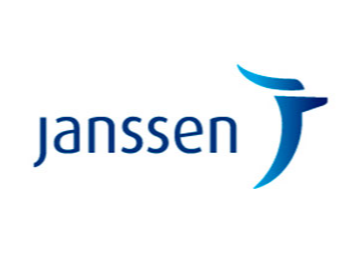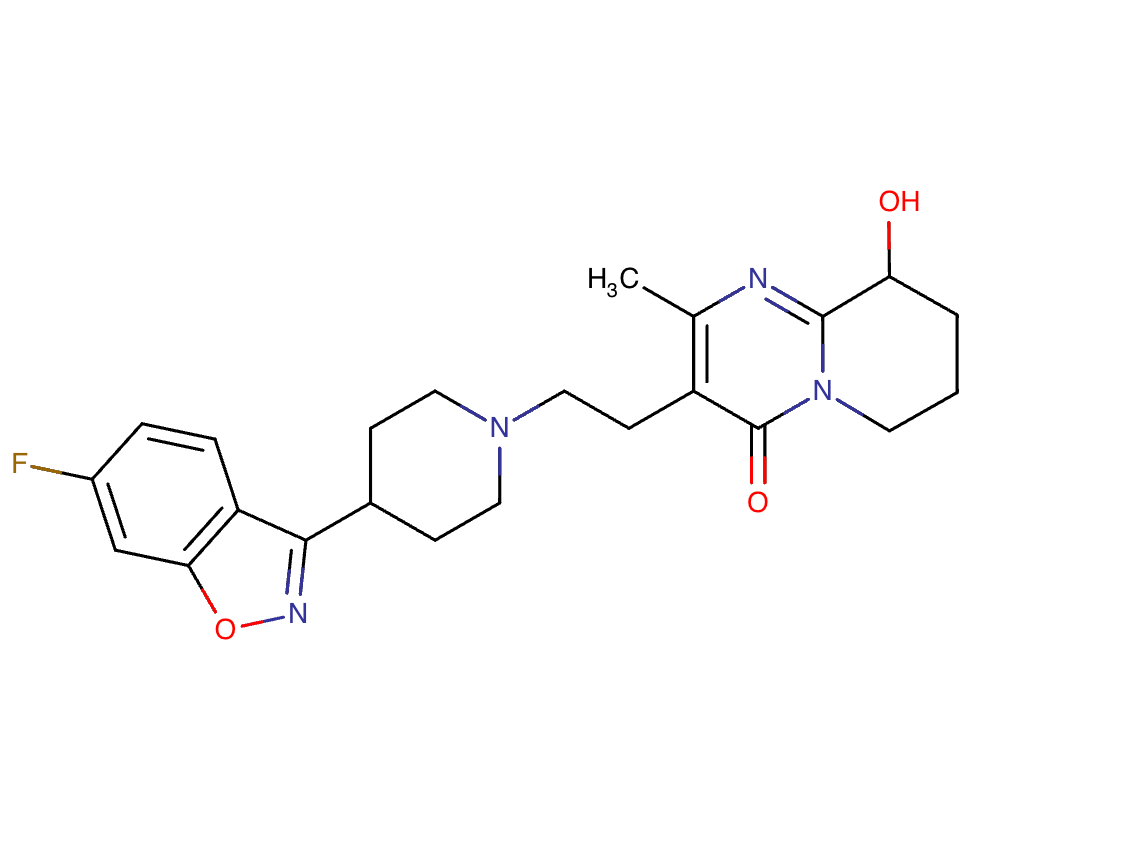Drug information
Not provided
Paliperidone Palmitate Six-Monthly (PP6M)
INVEGA HAFYERA®, BYANNLI®
Small molecule
Paliperidone palmitate administered as a once every six-month long-acting injectable (PP6M) is indicated for the maintenance treatment of schizophrenia in adult patients who are adequately treated with 1-monthly paliperidone palmitate injection at doses of 100 mg or 150 mg (preferably for four months or more) or 3-monthly paliperidone palmitate injection at doses of 350 mg or 525 mg (for at least one injection cycle) and do not require dose adjustment. BYANNLI® and INVEGA HAFYERA® manufactured by Janssen Pharmaceuticals are available in dosage formulations of 700mg and 1000mg. Maximum plasma concentrations of PP6M are achieved after approx. 33-35 days (median Tmax), and are expected to remain in circulation for up to four years at < 1% of the average steady state levels.
PP6M was approved under the trade name of INVEGA HAFYERA® in August 2021 by the United States Food and Drug Administration (US FDA) for the treatment of schizophrenia in patients after they have been adequately treated with INVEGA SUSTENNA® (PP1M) for at least 4 months OR an every-three-month paliperidone palmitate (PP3M) extended-release injectable suspension (e.g., INVEGA TRINZA®) for at least one three-month cycle. PP6M is also approved by the European Medicines Agency (EMA) under the trade name of BYANNLI® (previously Paliperidone Janssen) for the maintenance treatment of schizophrenia in adult patients who are clinically stable on PP1M or PP3M. The transition to BYANNLI should be initiated in place of the next scheduled dose of paliperidone palmitate injection.
PP6M (1000 mL/5 mL and 750 mg/3.5 mL) has received regulatory approval from 15 Drug Regulatory Authorities across 45 countries, including the FDA, EMA, TGA, MEDSAFE, DH, KMFDS, HSA, NPRA, ISP, INVIMA, Rwanda FDA, SFDA, ALIMS, NMPA, and DCH. The formulation is marketed under the brand name BYANNLI in the European Union (EU) and European Economic Area (EEA). In other regions, including the United States, Australia, New Zealand, Hong Kong, South Korea, Singapore, Malaysia, Chile, Colombia, China, Thailand, and Georgia, it is branded as INVEGA HAYFERA.
Therapeutic area(s)
- Mental health
- Treatment
Administration route
Intramuscular
Associated long-acting platforms
Aqueous drug particle suspension, Nanocrystal technology
Use of drug
- Administered by a nurse
- Administered by a specialty health worker
Not provided
Dosage
Not provided
Not provided
Not provided
Not provided
Not provided
Not provided
Formulations
Compare
LY03010 (Paliperidone Palmitate Once-Monthly [PP1M])
Paliperidone Palmitate Once-Monthly (PP1M)
Paliperidone Palmitate Six-Monthly (PP6M)
Paliperidone Palmitate Three Monthly (PP3M)
Associated technologies
Not provided
Comment & Information
Developer(s)

Janssen Pharmaceuticals is a subsidiary company of Johnson & Johnson headquartered in Beerse, Belgium. They focus on manufacturing and developing pharmaceutical products for use in areas such as, Immunology, Infectious Diseases & Vaccines, Pulmonary Hypertension, Cardiovascular & Metabolism, Oncology, and Neuroscience.
Drug structure
Scale-up and manufacturing prospects
PP6M is commercially manufactured by Janssen Pharmaceuticals. The PP6M injectable contains a racemic mixture of (+)- and (-)- of paliperidone, and is joined with palmitic acid through an ester linkage. Similarly to paliperidone palmitate once-monthly injectable (PP1M) and three-monthly injectable (PP3M), PP6M is manufactured using Nanocrystal Technology to improve the dissolution properties of paliperidone palmitate, which is highly insoluble in water. PP6M has a bi-annual dosing interval arising from a higher concentration and an increased nanocrystal particle size.
NanoCrystal® Colloidal Dispersion Nanomill™ apparatus.
NanoCrystal technology enables intrinsically high loading of insoluble drugs as dosage forms consist mostly of pure API packed as a solid crystal, which is the most efficient form possible in relation to weight-to-volume. Paliperidone palmitate particles are dispersed in an aqueous suspension and transformed into smaller nanocrystals through particle-size reduction. These nanocrystals have a greater surface area than the larger original particles, resulting in increased water solubility. This medicinal product does not require any special storage conditions and has a shelf life of two years.
Digital microscope and scanning electron microscopy (SEM) to determine shape of the particles. Differential scanning calorimetric (DSC) and Fourier transforms infrared spectroscopy (FTIR) for quality control.
Excipients
No proprietary excipient used
No novel excipient or existing excipient used
No residual solvent used
Delivery device(s)
No delivery device
There are either no relevant patents or these were not yet submitted to LAPaL
Publications
Peters L, Dyer M, Schroeder E, D'Souza MS. Invega Hafyera (Paliperidone Palmitate): Extended-Release Injectable Suspension for Patients With Schizophrenia. J Pharm Technol. 2023 Apr;39(2):88-94. DOI: 10.1177/87551225231153541. Epub 2023 Mar 16. PMID: 37051282; PMCID: PMC10084407.
Objective: The objective of this study was to describe the safety, efficacy, and potential role in therapy of once in 6 months paliperidone palmitate formulation (PP6M; Invega Hafyera). PP6M is a long-acting injectable antipsychotic recently approved by the Food and Drug Administration (FDA) for the treatment of schizophrenia. Data Sources: A PubMed literature search was conducted using the following terms: paliperidone palmitate and long-acting antipsychotic injections (January 1, 2017, to November 1, 2022). FDA product labeling was also reviewed for pertinent data. Study Selection and Data Extraction: All relevant English-language articles focused on the efficacy and safety of PP6M were considered for inclusion. Data Synthesis: A multicenter, randomized, active controlled relapse prevention noninferiority study showed that PP6M is comparable to paliperidone palmitate once in 3 months formulation (PP3M) in terms of efficacy and safety in clinically stable schizophrenia patients. Place in Therapy: PP6M is indicated in the treatment of adult patients with schizophrenia, who need treatment over a prolonged period. It improves adherence and decreases the rate of relapse and hospitalizations among patients with schizophrenia. It is useful for patients who may have difficulty accessing health care or would prefer the convenience of less frequent injections. Conclusion: PP6M with its long duration of action and lowered frequency of administration (once every 6 months) expands the therapeutic choices available to patients with schizophrenia. More studies in patients with schizophrenia with PP6M, and perhaps other mental illnesses (eg, schizoaffective disorder), are required to fully elucidate the therapeutic potential of PP6M.
Cirnigliaro G, Battini V, Castiglioni M, Renne M, Mosini G, Cheli S, Carnovale C, Dell'Osso B. Evaluating the 6-month formulation of paliperidone palmitate: a twice-yearly injectable treatment for schizophrenia in adults. Expert Rev Neurother. 2024 Apr;24(4):325-332. DOI: 10.1080/14737175.2024.2325655. Epub 2024 Mar 6. PMID: 38445396.
Introduction: Paliperidone Palmitate is the only antipsychotic that has been developed in three different intramuscular long-acting injectable (LAI) dosing regimen: monthly (PP1M), quarterly (PP3M), and from 2020 also twice-yearly (PP6M). The latter was approved for the maintenance treatment of adults with schizophrenia and clinically stabilized with PP1M or PP3M.
Areas covered: Data from studies evaluating efficacy in the maintenance treatment of schizophrenia with PP6M are reviewed. Since no post-marketing safety studies are currently available, data from spontaneous reporting system databases, FAERS and Eudravigilance, are analyzed and the reported treatment-emergent adverse events of PP6M are discussed.
Expert opinion: The efficacy of PP6M is comparable to that of PP3M in terms of relapses prevention in patients with schizophrenia previously stabilized on PP3M or PP1M. Also, the maintenance of clinical efficacy in the long term has been demonstrated. Data from pharmacovigilance analyses, as well as from phase 3 studies, show that PP6M is generally well tolerated, consistently with PP3M safety data. PP6M allows a longer dosing interval than any other LAI antipsychotics, potentially reducing nonadherence and disease relapses. In future, an increase in the prescription rates of PP6M is expected and real-world efficacy and tolerability studies will be conducted.
Additional documents
No documents were uploaded
Useful links
There are no additional links
Collaborate for development
Consider on a case by case basis, collaborating on developing long acting products with potential significant public health impact, especially for low- and middle-income countries (LMICs), utilising the referred to long-acting technology
Share technical information for match-making assessment
Provide necessary technical information to a potential partner, under confidentiality agreement, to enable preliminary assessment of whether specific medicines of public health importance in LMICs might be compatible with the referred to long-acting technology to achieve a public health benefit
Work with MPP to expand access in LMICs
In the event that a product using the referred to long-acting technology is successfully developed, the technology IP holder(s) will work with the Medicines Patent Pool towards putting in place the most appropriate strategy for timely and affordable access in low and middle-income countries, including through licensing
